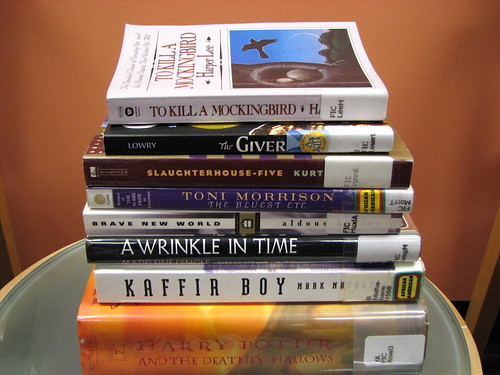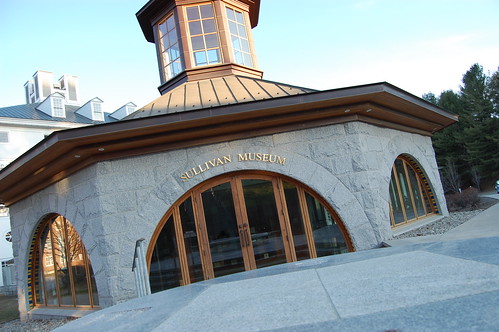
As social media and associated platforms grow in relevance in everyday user lives, so too has the importance of utilizing such platforms to the general public for any organization, to promote its successes of its events and members to further grow and prosper as an organization with such a charity focus as the 501st Legion. Over the past couple of years, I’ve helped promote the 501st Legion online through Facebook and Twitter in an effort to help spread the word about the organization to the general public. On the first day that groups were opened outside of school networks, I created the official 501st Group, which I still screen members for based on our group rosters, and when fan pages were first created, I set one up for the group, with the intention that it might hold the place of an official page, as well as one for the New England Garrison. At some point, an official 501st twitter feed was put together by Legion Public Relations Officer Dean Plantamura, which has been continually updated. The New England Garrison twitter feed was put together, which I have since taken over in my role of Garrison Archivist. I had recently provided a similar document to the 501st, and have adapted it with the intent that it could be used by other people who are looking for best practices to promote organizations online, but also for people to think about how they use the internet and social media.
Social Media is an incredibly helpful tool for organizations. As of writing this, the 501st Fan Page has garnered 12,393 fans, while the NEG total runs to 776 total fans. The NEG likewise has 243 followers on twitter (following 102 feeds, mainly local troopers, other garrisons and other geek-related people), while the 501st feed has 4,211 followers and follows 57 people total (Celebrities, official Star Wars related organizations and garrisons). The large number of people following the group, and the level of interactivity that has been noted is a positive one, and allows the 501st legion to address and speak with fans, potential members and organizations in a public setting.
As Social Media is a tool, users and moderators must be mindful of the end result that they are trying to achieve, the overall purpose of the utilization of the tools, and select the proper tools accordingly. People have been organizing themselves into social networks since the dawn of mankind, and this development in the wired world should come as no surprise to anyone, as the seeds of how the internet will be used to connect people have been planted for several years now. As such, it is a tool that should be utilized in the best way possible. (Source)
Facebook is the best example of social media at the moment. According to its website: there are over 500 million active users, and with at least 50% of those users logging in on any given day. In addition to that, there are over 900 million objects (defined as pages, groups, events and community pages), with the average user connected to around 80 of these objects. Facebook also cites 30 billion content items are shared each month. (Statistics from Facebook) This is a company that is designed to connect people with a number of objects, places, and people over the course of each day. (Source)
One of the issues that I’ve noticed with some garrisons and similar organizations is the way that they promote themselves within Facebook, but use the wrong tools available for the job, or that such efforts aren’t followed through on: questions go unanswered, and spam piles up.
Facebook currently allows for several options for the 501st Legion:
Personal Page: A page can be created for any given person in the legion, or for a garrison as a whole, which users can befriend and communicate with. This is the least desirable option for a public relations page for the group, as it is a fairly closed system that permits only a select number of people to befriend (with a waiting period for the owner to accept them) Specific users can be banned, but in this option, the drawbacks are greater than the benefits. The best use for such an element is for someone to befriend legion members on the behalf of a garrison, or for an internal garrison roster, where information can be distributed to members on the platform.
Group: Likewise, Groups are a somewhat closed system, but can allow for open access for the general public, while retaining the ability to hide some information for users, or to lock out specific users. The 501st has an official group, of which only official members with a TK ID and Honorary members are allowed to join. This group is not actively updated. The best use for something like this is for select people to join (garrison or 501st legion members) to discuss garrison events or communicate with one another within the context of the 501st legion.
Fan Pages: This element represents the best option for garrisons or other legion elements to present themselves to the general public. Information can be placed for the public to see, such as news articles, specific topics, or to solicit information from the fan base of the group. This also represents a good location for public information on the legion, such as relevant reference links. The best purpose for a group is public relations with non-members, and presents a place for non-members to ask questions of the legion and its members.
All three locations have specific uses for specific actions and intentions, and Garrison members should be mindful of these uses as they are designing them. While a closed system such as a personal account can be locked down for non-members, and certain things can be discussed, things like fan pages can be opened to the public, and certain things can be viewed by the general public. As such, all elements should require constant supervision by an appointed or volunteer moderator to ensure that the image of the legion is upheld, and that appropriate conduct is visible to members and non-members alike.
In one incident recently, a disgruntled member who had been banned from the internal forums had accessed the 501st Legion page and posted a gallery of screen shots of an incident that had ended up with his dismissal. This was not the appropriate location for such discussion in a public place, and the entry was promptly deleted. Similar incidents with spam postings, inappropriate language, insults and other conduct have been noted, and are removed when found.

Moderation is needed for the most public areas of such sites, to prevent this sort of thing from lasting too long on the site, and proving to be a negative experience for the legion. However, moderators should allow genuine critical comments and not be overly heavy-handed when it comes to deleting comments. Statements, pictures, and links that are overly hateful, inappropriate, solicit non-legion activities and other obvious things ('All members, friend me!', 'Click here to donate', and so forth are examples that have been removed). The idea is to foster a positive community that people who follow the organization can look at and contribute to.
Moderators also need to be aware that they are representing the Legion as a whole, and people unable to cope with this responsibility should not be in charge of a page. One of the most crucial lessons that need to be learned for anybody using the internet is that there is no privacy, and there should not be the expectation of privacy: where this is the case with an individual, it should be noted for an organization as well. While the 501st Legion is a diverse group, conflicts such as the ones noted above are elements that should be limited in the public’s eye; such actions disrupt the public image that any organization is trying to promote.
Fortunately, the 501st’s fan base is a good, robust one. A large number of fans on the 501st page have shown to be helpful, directing people who might otherwise not find costuming and reference links, showing people where to join in their area, and allowing the Legion as a whole to demonstrate causes and charities that it frequently works with. The ~12,000 fan base allows for the legion to direct support to local garrisons, similar organizations and causes as well. Recently, the Georgia Garrison put out a call for fans to invite others with the hope that they could reach 100 members in the two weeks prior to Dragon*Con. This call was replicated and tagged on the 501st page, and the Georgia Garrison was able to reach and exceed that goal within a day. Similar actions have been taken, with comparable results. On author, Neil Gaiman (@neilhimself) on twitter, has produced what is called the Neil Gaiman Effect, where he has accidentally taken down websites by directing an incredible amount of attention to said sites, requiring the webmasters to work and get them back up again. This is part of the power of social media.
The use of twitter is common amongst garrisons, and the 501st has utilized this to highlight announcements, news articles, update fans from events, and to communicate with fans who might have questions. The Legion's feed entries are often copied to the Facebook page, and have been used to retweet links, statements and pictures from fans who post up relevant information.
The New England Garrison has a relatively small presence when it comes to social media. While it boasts nearly 800 fans, the fans are relatively quiet, interacting with the site minimally, whereas the legion site has a much higher active number of participants who 'like' and comment on posts. Similarly, with twitter, there are few direct messages or @ replies to the garrison as a whole.
The NEG likewise posts up public events to the Facebook page, with the relevant details: location, time and description, and allows members to invite people to events, which has brought people who otherwise might have missed such events (members who are not frequently up to date on garrison activities, friends and family who might not have otherwise been known about events, etc). These event listings are helpful, and allow members to keep track of garrison activities through where most people go each day. Care needs to be taken that private events not be posted up for safety and privacy concerns: birthday parties, or other non-public events.
The 501st Legion has the ability to post up events, but the framework and logistics are not in place for effective coverage of the Garrison's activities as a whole. This does remain a possibility, and there are other activities that the legion and garrison can do to reward the large number of fans that it's gained - contests have been staged at milestones, and certainly, the page can be used to solicit images, stories, and other items.
To conclude, Social Media is an important tool for legion members and non-fans to interact with the legion and their local Garrisons, and the appropriate, official venues for such things should be sought out.
Care and dedication needs to be put forward by said groups, in order to ensure that timely, accurate and appropriate information is directed to the general public in the best manner possible, while removing information and comments that would otherwise be inappropriate for the Legion to be associated with.
Legion members should foster a constant and relevant relationship with fans - answering questions in a timely manner and posting up information that reflects the efforts of the members that keeps the public engaged.
Utilization of social media helps to foster relationships with fans, potential members and members of the legion, as well as local businesses and organizations who might be willing to partner with the legion and its members.
The results thus far have demonstrated that the Legion has a positive experience thus far from the technology, and that it will need to continue such a presence, on an official, and local level. The lessons that have been demonstrated with the legion’s experience with social media are ones that should be learned and implemented by other organizations to help utilize social media to its fullest potential.







 "...and then what happened?"
"...and then what happened?"



 Earlier today, the former Chief of Staff of the U.S. Army, Gen. Gordon Sullivan, spoke at the museum at Norwich University's campus that bears his name for a brief talk to students. As he opened, he noted that he didn't have a plan for what he wanted to talk about, but pointed out objects in one of the rooms that related to his experience within the time that he had spent in the military. Over the course of his 36 year career, Sullivan has seen a lot: he volunteered to go to Vietnam and served for a couple of tours there, while his career culminated in his presiding over the transition of the U.S. Army after the fall of the Soviet Union, and the massive changes that came as a result of that. A number of points that Sullivan brought up stuck with me over the course of his talk.
Earlier today, the former Chief of Staff of the U.S. Army, Gen. Gordon Sullivan, spoke at the museum at Norwich University's campus that bears his name for a brief talk to students. As he opened, he noted that he didn't have a plan for what he wanted to talk about, but pointed out objects in one of the rooms that related to his experience within the time that he had spent in the military. Over the course of his 36 year career, Sullivan has seen a lot: he volunteered to go to Vietnam and served for a couple of tours there, while his career culminated in his presiding over the transition of the U.S. Army after the fall of the Soviet Union, and the massive changes that came as a result of that. A number of points that Sullivan brought up stuck with me over the course of his talk.









